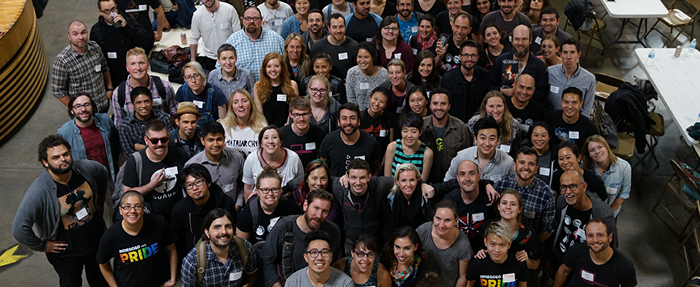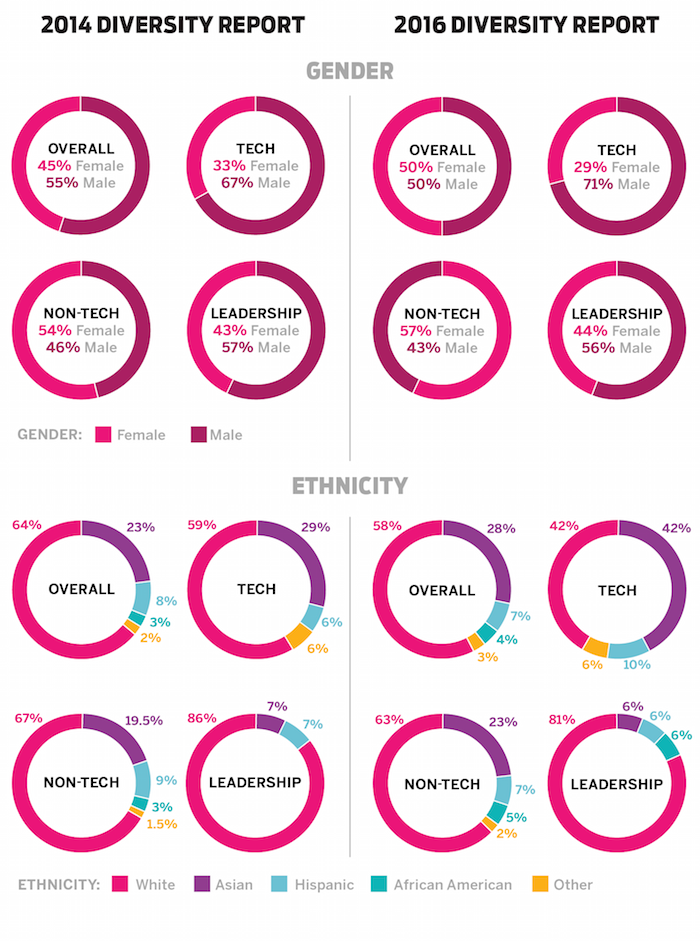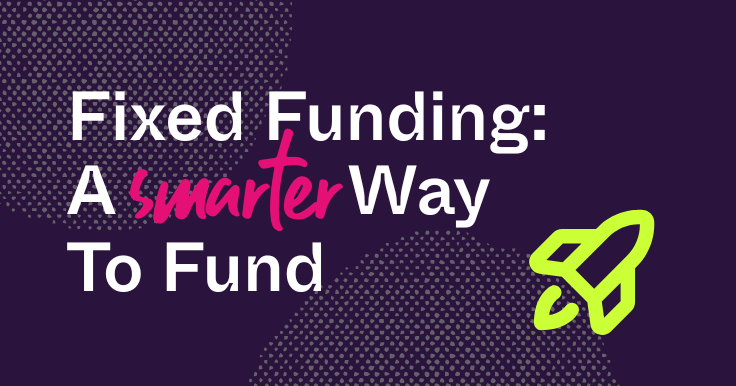
All kinds of people from all over the world have come to Indiegogo to bring their ideas to life – more than 700,000 from 223 countries & territories to be exact. This diversity of entrepreneurs and their endeavors is not only incredible, but also the foundation upon which Indiegogo was created. Biases and bottlenecks in the funding process limited entrepreneurial success to a few, well-connected people. By creating an open and engaging ecosystem for people to unite around ideas that matter to them, we’re making entrepreneurship accessible to all.
Why Diversity and Inclusion Matter to Us
We started Indiegogo because when all ideas from all kinds of people get a chance, the world is better. More problems are solved; more communities are served; more beauty is created. And to give every idea a fair shot, we believe our team must mirror the very people and diverse perspectives we aim to empower. Otherwise we will fail as a business, and we will fail in achieving our mission. For us, diversity and inclusivity are not nice-to-haves, but must-haves. They’re not just an output of success, they’re an input that makes success possible.
Unfortunately, diversity has long been a challenge for the tech industry, but it’s a challenge we’ve leaned into since our inception in 2008. In an effort to improve transparency and encourage other companies in the industry to work on diversity, we first published our diversity statistics in 2014. Moving forward we are excited to publish annual diversity reports, and share what’s helping us continue to make progress.
How We Measure Diversity
A note before diving into the numbers: We know that gender cannot be limited to two choices, and that our ethnic heritage is far too beautifully complex to be described by just five options. We’ve heard some ideas like expanding the categories used with our data, but that has its own limitations. We are still figuring out how to make our own reporting more inclusive, and if you have found an approach that works we would love to hear about it as we continue to evolve.
In the meantime, we are using the same categories as our last report so we can hold ourselves accountable to meaningful and measureable progress.
Our Progress

The specific categories of diversity that we looked at were gender and race/ethnicity, and we saw measurable improvement in both areas overall, but one slip. Starting with gender, we saw an increase in percentage of women team members at the company level as well as at the leadership level between 2014-2016. We also saw improvement in racial and ethnic diversity in the company overall, in tech positions, in non-tech positions, and in our leadership. Where we lost ground a bit was in the percentage of tech roles held by women. While the former improvements are ones we want to build on, this latter decline is one we’d like to reverse in the year ahead.
Despite being a small company with limited resources, our diversity statistics compare favorably to larger tech companies. So how do we get the numbers we have, with our small team and limited budget?
What Drives Diversity and Inclusion at Indiegogo
The answer seems to be three things: a mission rooted in inclusion, a heavily values-based culture, and a product dependent on innovation.
Indiegogo’s mission is to “empower all people to unite around the ideas that matter to them and together make those ideas come to life.” Central to this mission is the principle of inclusion, which means that anyone who joins our team is drawn to our mission, and values inclusion at a deeply personal level too. We don’t have to teach it because it’s already in people’s hearts and minds the moment they join.
Secondly, our culture is grounded in four values: fearlessness, authenticity, collaboration, and empowerment. These values were identified by our founders and together they encourage speaking your mind freely while respecting different points of views. They encourage our team to honor their strengths while also stretching themselves outside what is comfortable. To succeed at Indiegogo, you must take ownership and be accountable for results, but also catalyze the learning in others at the same time. Inclusion, again, is at the core of these four values as well.
This is also why we’ve integrated our values into our hiring process. Like mission-mindedness, we can’t teach our values. You either live them, or you don’t. But if you do, you’re far more likely to be inclusive, and thus far more likely to be happy and successful working at Indiegogo.
People come to Indiegogo because of the change we’re creating in the world, but people stay at Indiegogo because here, they can fully be themselves. The more they bring their whole, unique selves to work and respect the whole, unique selves of others, the more they grow, the more we innovate as a company, and the more people and ideas we support and amplify.
As a result of our mission and our values-driven culture, it’s not a surprise that Indiegogo team members have both organically and increasingly taken on work to improve Indiegogo’s diversity and inclusion efforts. From organizing Pride events, to creating employee resource groups (ERGs) like Ladies Who Tech, to speaking at and sponsoring conferences like the Tech Inclusion Conference or Lesbians Who Tech, to organizing diversity & inclusion trainings, and to launching our own Diversity & Inclusion group, our team is a living example of Gandhi’s words: “be the change you want to see.”
Goals for Next Year and Beyond
Even though we have made progress, we know there is still a lot of work to be done at Indiegogo and the tech industry in general. We are lucky to have a team who wants to lead the charge, and lucky to have our headquarters in the incredibly diverse city of San Francisco. We’ll know we’re on the right track when Indiegogo looks more and more like the community around us. Our Diversity & Inclusion Team will continue to take the lead in helping us make Indiegogo an even more diverse and inclusive place tomorrow, than we are today.
While we’re pleased to see progress in our diversity statistics, and grateful for a mission and long-standing values-based culture that has made these results possible, we remain committed to making more progress and sharing this progress next year. Stay tuned!


